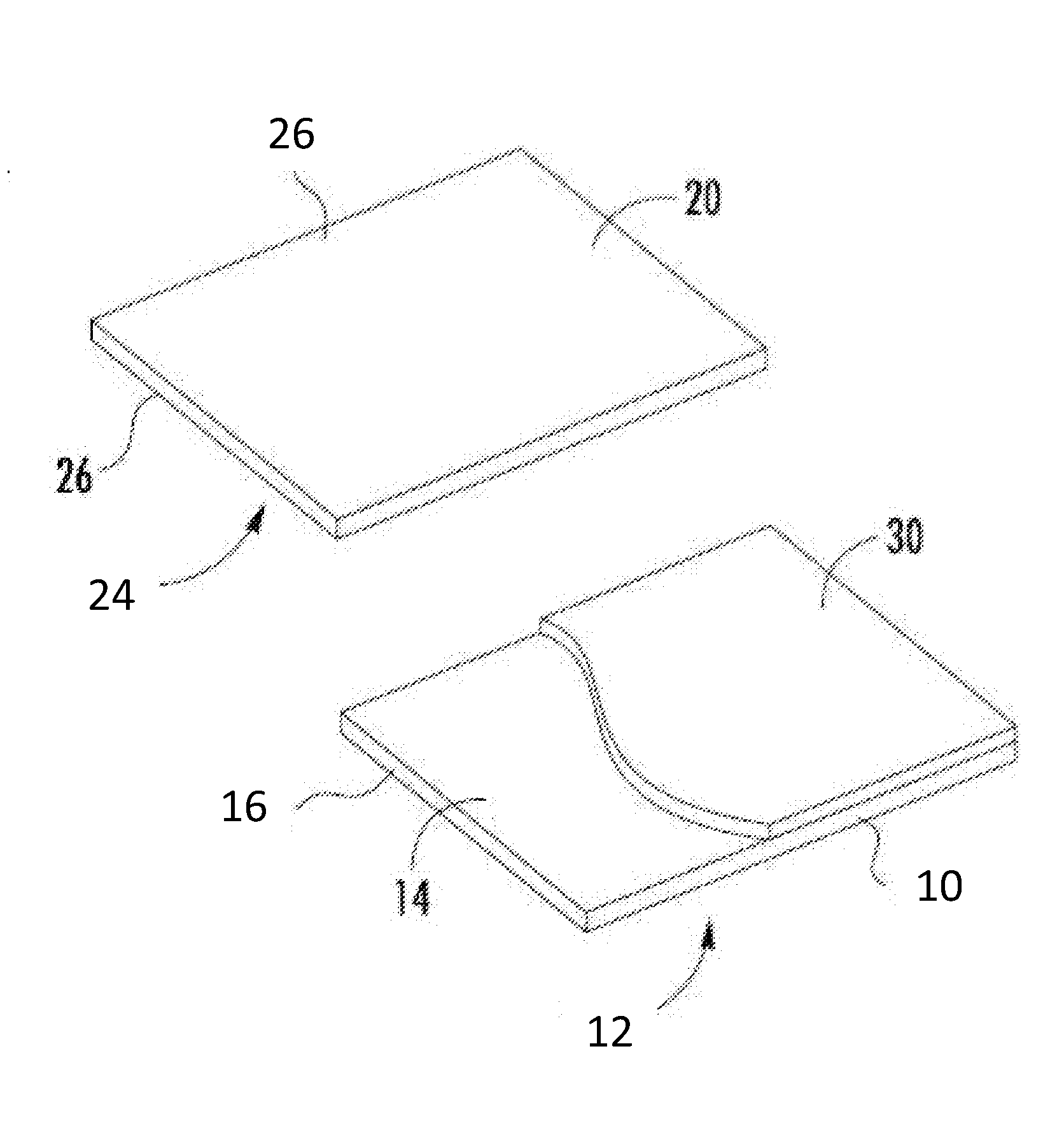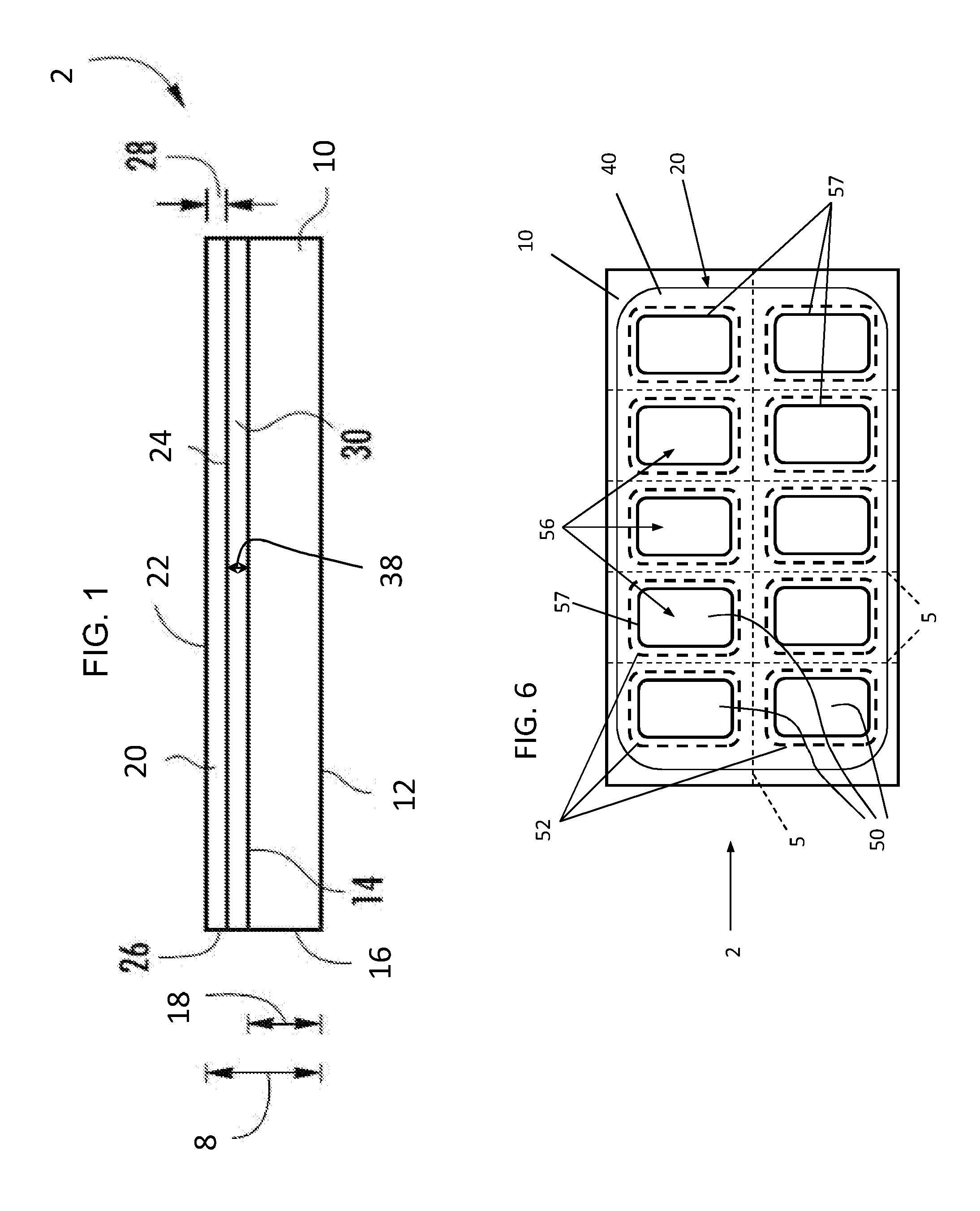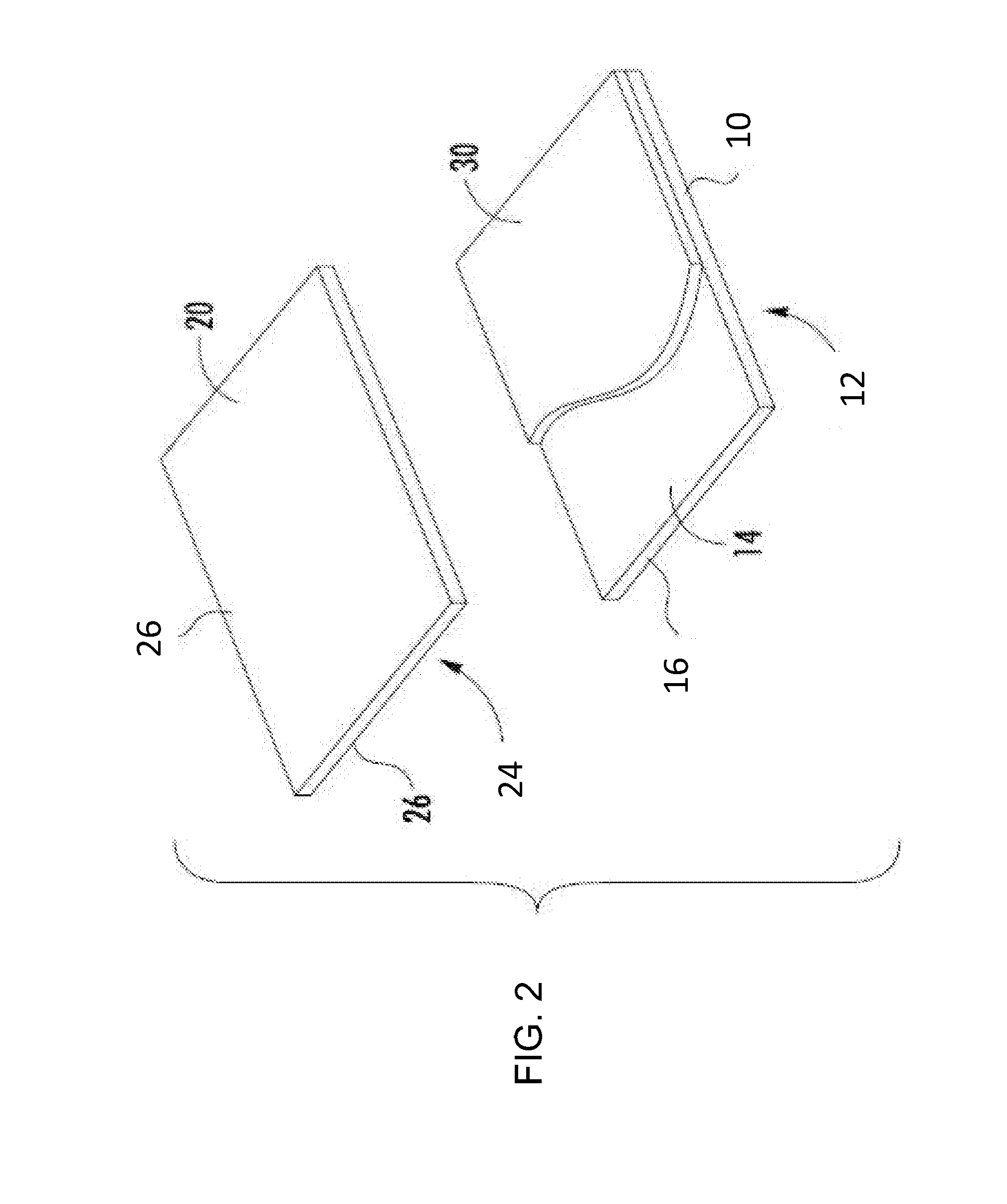Facilitated Processing for Controlling Bonding Between Sheet and Carrier
a technology of flexible sheets and carrier, which is applied in the direction of other domestic articles, coatings, chemistry apparatuses and processes, etc., can solve the problems of oled devices that cannot be used, limit the quality and process of devices, and the technology required for roll-to-roll processing of high-quality displays is not yet fully developed, so as to reduce outgassing emissions and prevent delamination
- Summary
- Abstract
- Description
- Claims
- Application Information
AI Technical Summary
Benefits of technology
Problems solved by technology
Method used
Image
Examples
example 4a
[0077]A glass carrier with its bonding surface O2 plasma and SC1 treated was then treated with 1% dodecyltriethoxysilane (DDTS) in toluene, and annealed at 150° C. in vacuum for 1 hr to complete condensation. DDTS treated surfaces exhibit a surface energy of 45 mJ / m2. As shown in Table 4, a glass thin sheet (having been SC1 cleaned and heated at 400° C. in a vacuum for one hour) was bonded to the carrier bonding surface having the DDTS surface modification layer thereon. This article survived wet and vacuum process tests but did not survive thermal processes over 400° C. without bubbles forming under the carrier due to thermal decomposition of the silane. This thermal decomposition is expected for all linear alkoxy and chloro alkylsilanes R1xSi(OR2)y(Cl)z where x=1 to 3, and y+z=4−x except for methyl, dimethyl, and trimethyl silane (x=1 to 3, R1=CH3) which produce coatings of good thermal stability.
example 4b
[0078]A glass carrier with its bonding surface O2 plasma and SC1 treated was then treated with 1% 3,3,3, trifluoropropyltritheoxysilane (TFTS) in toluene, and annealed at 150° C. in vacuum for 1 hr to complete condensation. TFTS treated surfaces exhibit a surface energy of 47 mJ / m2. As shown in Table 4, a glass thin sheet (having been SC1 cleaned and then heated at 400° C. in a vacuum for one hour) was bonded to the carrier bonding surface having the TFTS surface modification layer thereon. This article survived the vacuum, SRD, and 400° C. process tests without permanent bonding of the glass thin sheet to the glass carrier. However, the 600° C. test produced bubbles forming under the carrier due to thermal decomposition of the silane. This was not unexpected because of the limited thermal stability of the propyl group. Although this sample failed the 600° C. test due to the bubbling, the material and heat treatment of this example may be used for some applications wherein bubbles a...
example 4c
[0079]A glass carrier with its bonding surface O2 plasma and SC1 treated was then treated with 1% phenyltriethoxysilane (PTS) in toluene, and annealed at 200° C. in vacuum for 1 hr to complete condensation. PTS treated surfaces exhibit a surface energy of 54 mJ / m2. As shown in Table 4, a glass thin sheet (having been SC1 cleaned and then heated at 400° C. in a vacuum for one hour) was bonded to the carrier bonding surface having the PTS surface modification layer. This article survived the vacuum, SRD, and thermal processes up to 600° C. without permanent bonding of the glass thin sheet with the glass carrier.
PUM
| Property | Measurement | Unit |
|---|---|---|
| temperature | aaaaa | aaaaa |
| thick | aaaaa | aaaaa |
| thickness | aaaaa | aaaaa |
Abstract
Description
Claims
Application Information
 Login to View More
Login to View More - R&D
- Intellectual Property
- Life Sciences
- Materials
- Tech Scout
- Unparalleled Data Quality
- Higher Quality Content
- 60% Fewer Hallucinations
Browse by: Latest US Patents, China's latest patents, Technical Efficacy Thesaurus, Application Domain, Technology Topic, Popular Technical Reports.
© 2025 PatSnap. All rights reserved.Legal|Privacy policy|Modern Slavery Act Transparency Statement|Sitemap|About US| Contact US: help@patsnap.com



